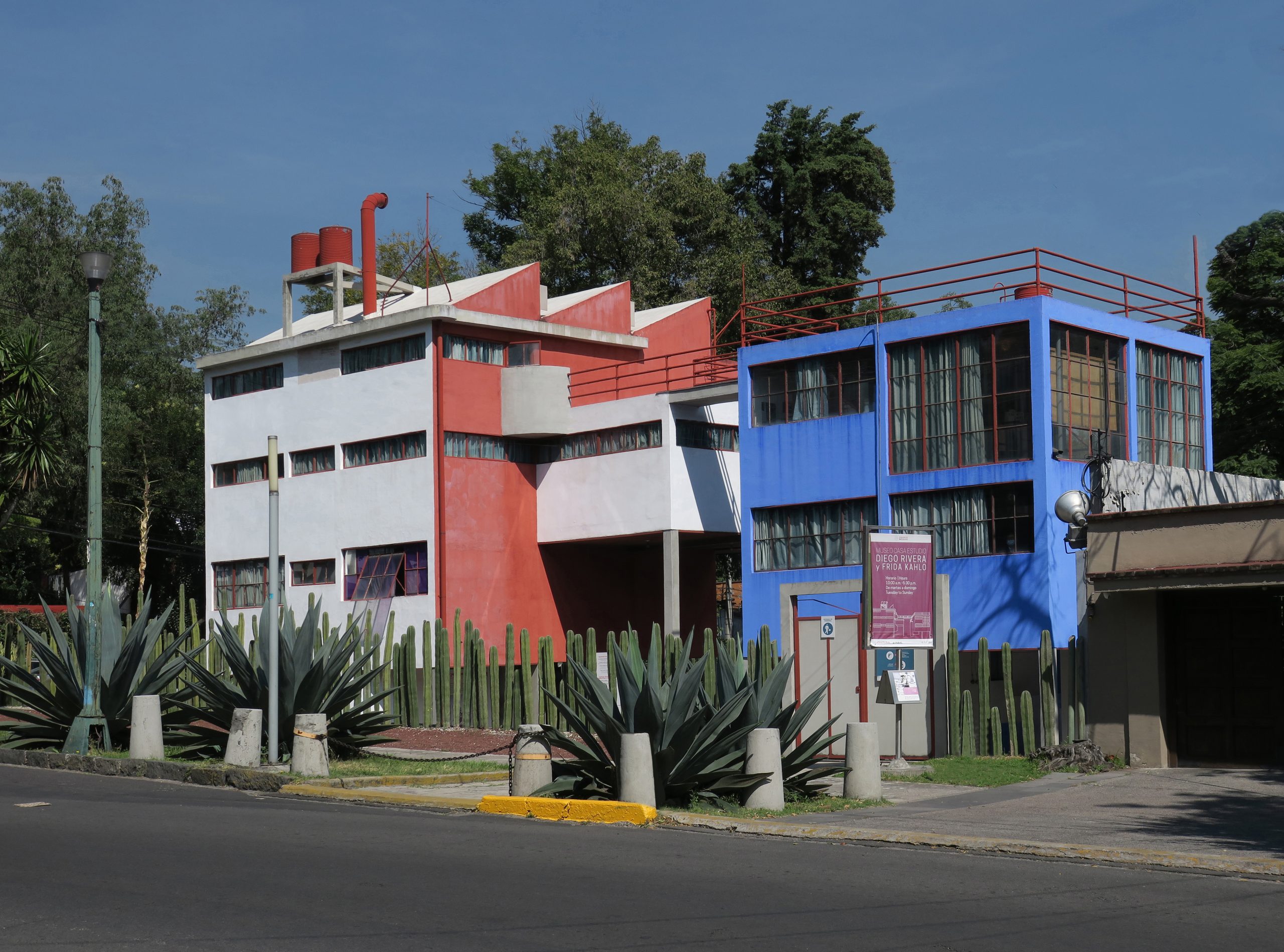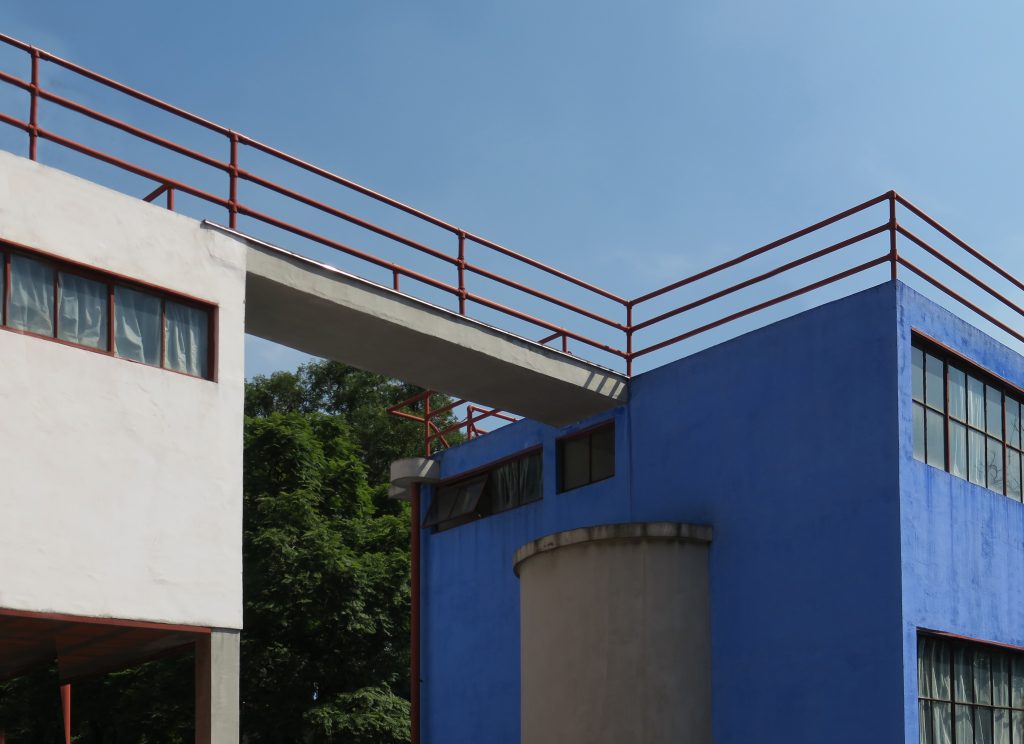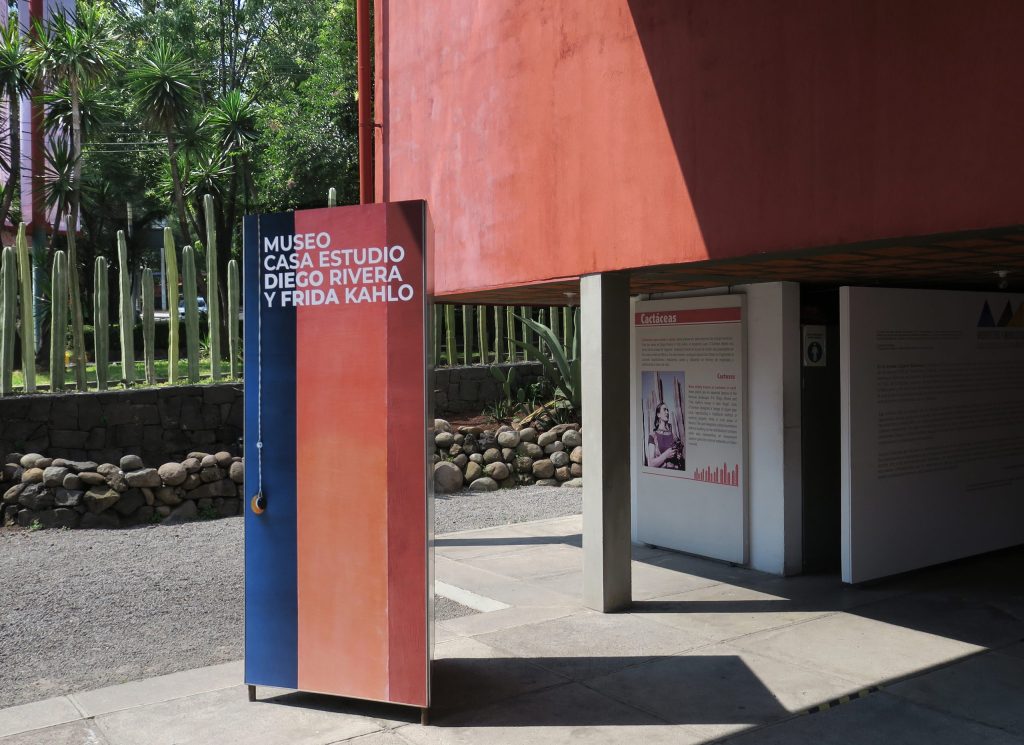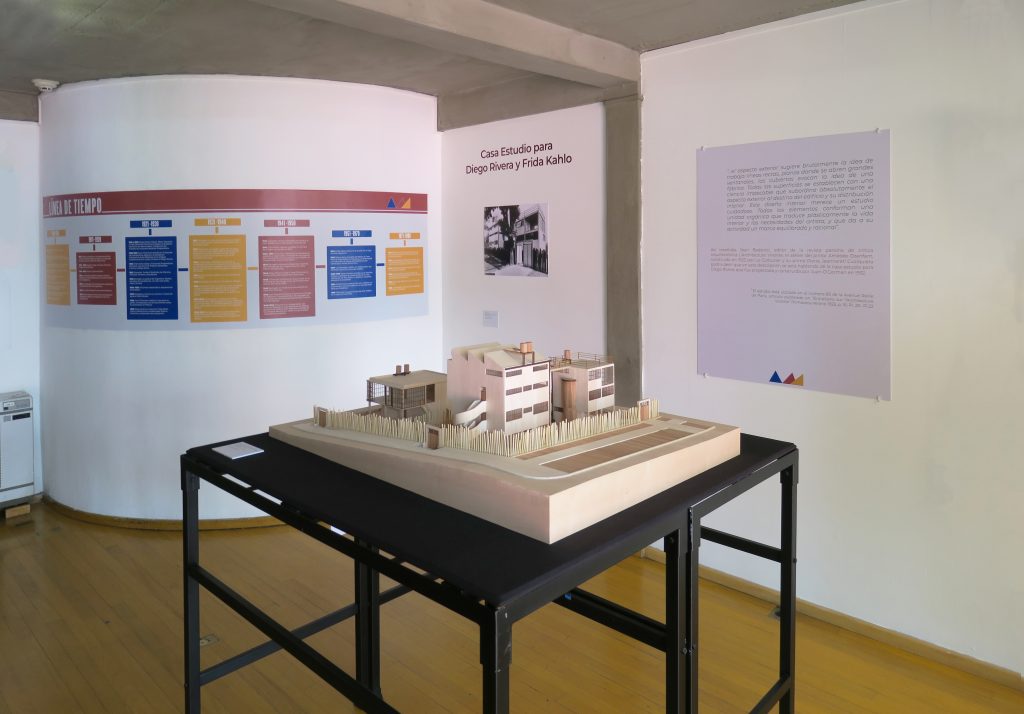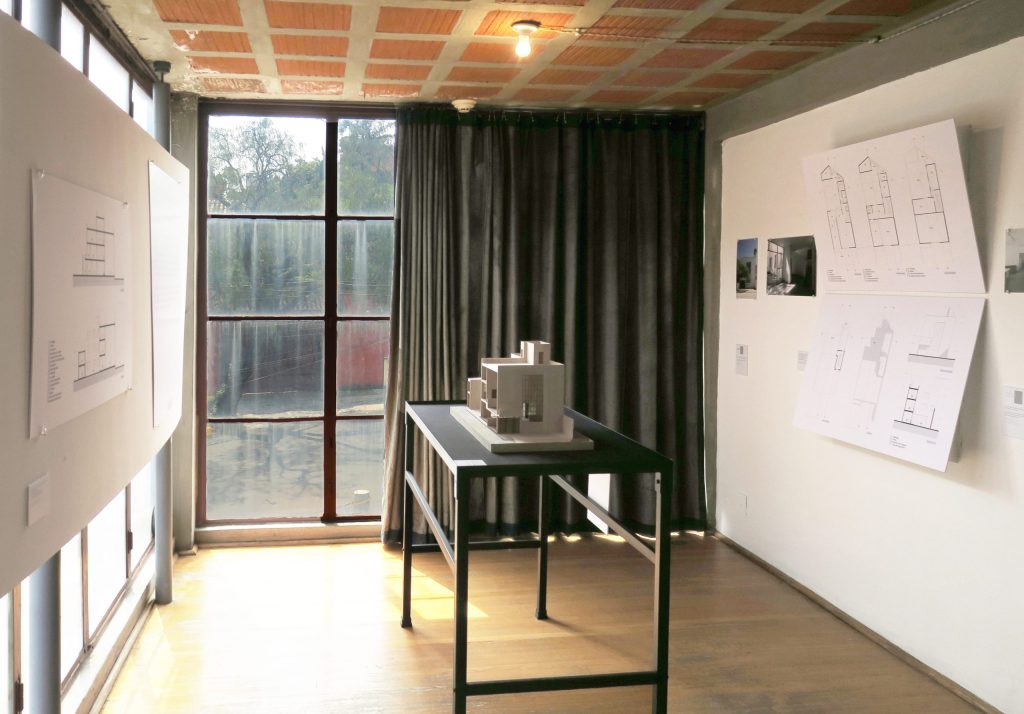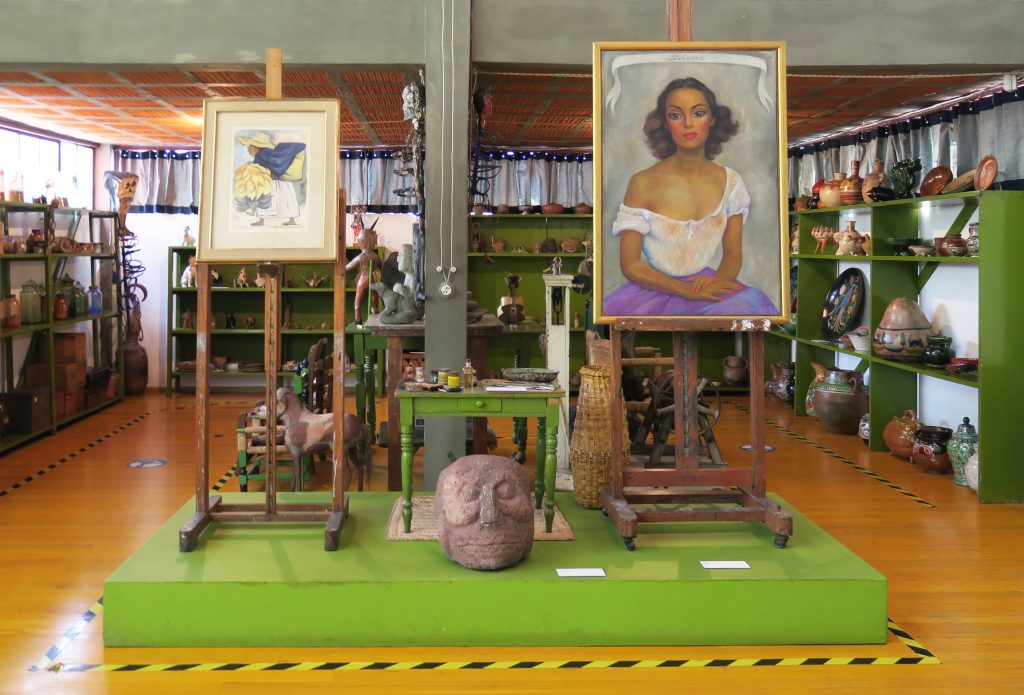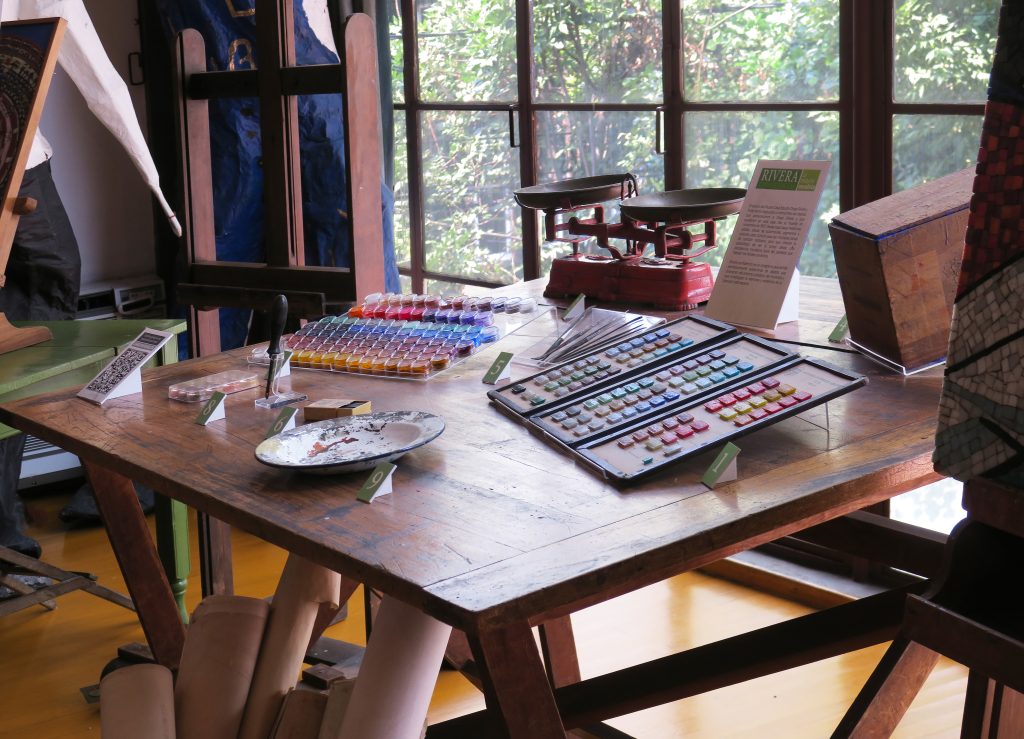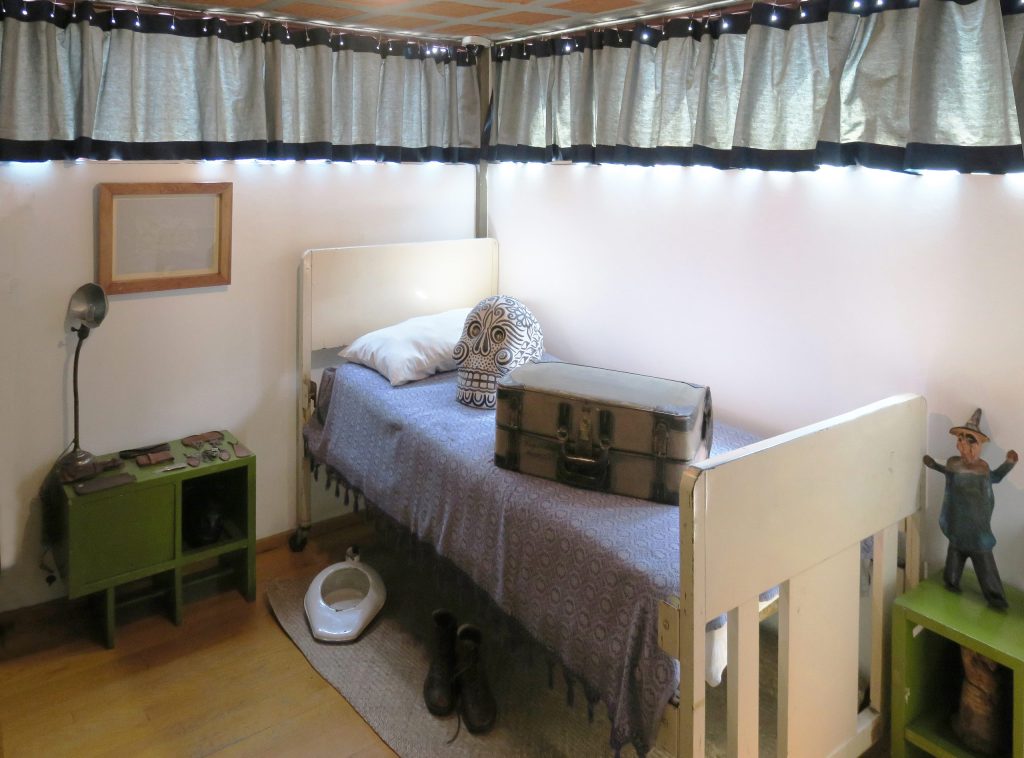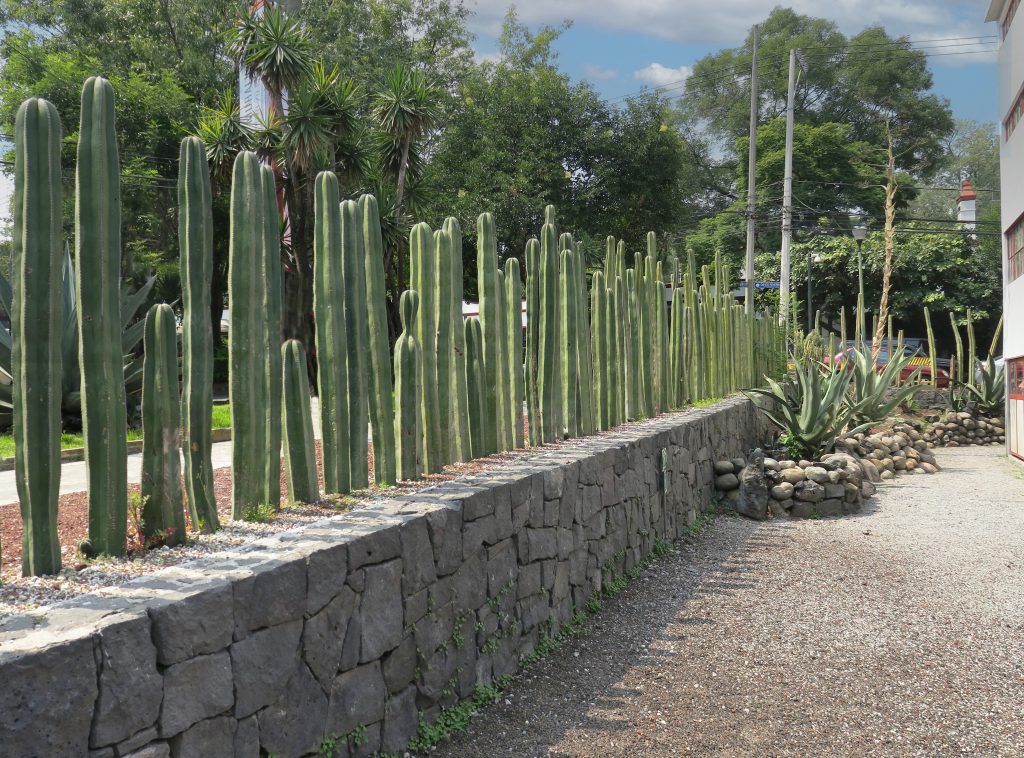What started, in 1931, with Mexican painter and architect Juan O’Gorman extending an invitation to legendary muralist Diego Rivera to go see his latest project, a functionalist house he had designed for his artist father Cecil O’Gorman, ended up becoming one of Mexico City’s most iconic modernist buildings. Rivera not only liked the project but proceeded to buy the adjacent lot and commissioned O’Gorman to design twin house/studios for him and his wife Frida Kahlo.
A then disciple of Le Corbusier, O’Gorman’s design follows many of the Swiss pioneers of Modernism ideas: plenty of natural light, bold geometry, absence of ornamentation, and an overall minimalist aesthetic that favored the beauty found in function. Adding a decidedly Mexican flavor, the houses are rendered in strong colorful tones, Rivera’s in an earthy red and Kahlo’s in blue, and is separated from the street by a wall like row of cacti, a quintessential element of the Mexico landscape.
Speaking about the house-studio architectural legacy, its director, Marisol Argüelles San Millán, stated: “The architectural ensemble that makes up the Diego Rivera and Frida Kahlo House-Estudio Museum is relevant not only for the history of the characters who inhabited it for several decades of the 20th century, but also for being one of the first functionalist houses in Mexico. The Cecil O’Gorman house, designed for the architect’s father, represents the start of the architectural avant-garde in Mexico, it is the starting point of what would happen in the field of Mexican architecture in later generations.”
The two tower like buildings, built on stilts, (“Pilotis,”as they are known in the Modernistic vocabulary) are connected by an open air, rooftop bridge and contain living quarters and studio space for both painters, with Rivera occupying the larger one due to the scale of his works and the social traffic brought about his (at that time) more successful career ( the ground floor was often used as gallery space).
The couple moved into the house in 1934 and would live and work in their respective quarters until their deaths ( Kahlo in 1954, Rivera in 1957). Although splitting her time staying also at her childhood house, it was here at their joint home that Kahlo would paint many of her masterpieces, including “What Gave Me Water,” “The Watchful Eye,” “The Late Dimas,” and the “The Two Fridas.”
After Rivera’s passing, the house was gifted by his daughter to Mexico’s National Fine Arts Institute, and in the 1980’s was opened to the public. Today the house has become a major Mexico City architectural landmark, being considered the first ever functionalist house in Latin America. Beyond exhibiting a selection of art works, sketches, books, personal artifacts, and Rivera’s collection of pre-Hispanic and popular art, the museum house studio also hosts art and architecture exhibits related to the ideas of both artists’ works and O’Gorman groundbreaking design.
“The museum has oriented its vocation to the critical review of Mexican modernity, placing special emphasis on the work and biography of Frida Kahlo, Diego Rivera and Juan O’Gorman. However, we consider it essential to talk about its architectural heritage and its importance, thus, we have developed new lines of work that range from reflecting on the space, design and architecture to reviewing our exceptional collection, which contains nearly 2,600 objects that belonged to Diego Rivera, and allow us to study his life,”explained Argüelles about the museum program. One such insightful research initiative was the sound program, “Sonidos del estudio,” in which we recovered audiotapes with music and voices recorded by Rivera and his descendants, who inhabited the house of San Ángel until the 1980s, when it became a museum.
On the ongoing contemporary legacy of the house, Argüelles says: “We try to contribute new readings around Diego Rivera and Frida Kahlo, two iconic figures of Mexico about whom we are interested in working in light of more critical and current visions.”
By Paul Clemence, photographer, writer, author, wrote and shot all of the photos in this story.

